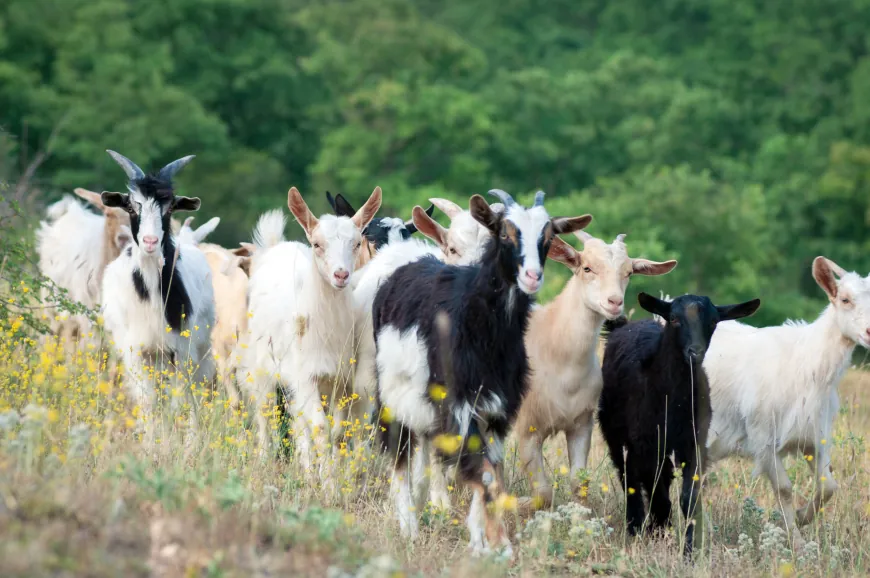Livestock Identification: An Essential Step Towards Ensuring Traceability
Accurate identification of livestock is one of the most crucial steps towards maintaining traceability throughout the supply chain.

Importance of Identification
Accurate identification of livestock is one of the most crucial steps towards maintaining traceability throughout the supply chain. Whether it is cattle, goats, sheep or pigs, each animal needs to have a unique identification that remains with it throughout its life. This helps link the animal back to its birthplace and prior locations with complete accuracy. Unique ID codes allow tracing the movement of animals from farm to slaughter and helps pinpoint the origin in case of a disease outbreak. With rising global trade in livestock and livestock products, identification plays a key role in maintaining food safety and security.
Methods of Identification
There are various commonly used methods for uniquely identifying individual livestock:
- Ear tags: Arguably the most widespread method, ear tags bear a unique alphanumeric code that is attached to the ear of the animal. Made from durable plastic or metal, ear tags can withstand weather elements and handling during the animal's lifetime.
- Tattoos: Employed mainly for cattle identification, a unique code is permanently tattooed into the ear or elsewhere on the animal's body. While long-lasting, tattoos require line-of-sight reading and special equipment.
- Electronic chips: RFID (radio-frequency identification) microchips encapsulating a unique ID code are implanted under the animal's skin, usually in the ear. Automated readers allow contactless scanning of chips for quick identification. However, upfront costs are higher compared to tags.
- Branding: A traditional method involving burning unique marks into the animal's hide using a hot iron. Labourious to apply and read, branding is now less popular except for some cattle operations.
- DNA profiling: Collecting a small tissue sample allows creating a genetic fingerprint of the animal. Useful as a backup or for animals without visible identification. Requires DNA testing facilities.
Ensuring Proper Implementation
While technology and methods continue to evolve, on-farm implementation of Livestock Identification remains challenging in some regions and farms. Key aspects include:
- Early identification: Calves, kids, lambs etc. need tagging shortly after birth to link them permanently to the dam and farm of origin.
- Record keeping: Comprehensive manual or digital records mapping each animal's unique ID to critical data like birth date, breed, vaccinations etc. must be diligently maintained.
- Tracking movements: Sales, shows, fairs or slaughter all require recording change in ownership and locations linked to the animal's ID for full traceability.
- Responsible management: Identifiers can get lost, damaged or mixed up over an animal's lifespan if not properly secured and managed on-farm and during transit. Regular checks are important.
- Compliance monitoring: Government agencies need to enforce identification regulations through periodic farm audits and inspections to ensure widespread adoption and accuracy of implementation. Non-compliance undermines the overall traceability system.
- Cross-border compatibility: As trade barriers reduce globally, identification systems need to achieve interoperability between countries for tracing livestock shipments seamlessly across borders. Standardized codes and readable methods are crucial.
Traceability Boosts Control and Confidence
When implemented correctly across a region or nation, comprehensive livestock identification and movement tracking delivers myriad benefits for farmers, regulatory bodies and consumers alike. It strengthens disease control efforts by enabling rapid tracing of animal contacts during outbreaks for quarantine and culling. Identification also supports claims of origin and breeds for niche markets, boosting farmer income potential. Consumers gain confidence in food safety and transparency of supply chains. Overall traceability builds resilience in livestock production systems and trade flows worldwide.
Get more insights on Livestock Identification
Discover the Report for More Insights, Tailored to Your Language
About Author:
Money Singh is a seasoned content writer with over four years of experience in the market research sector. Her expertise spans various industries, including food and beverages, biotechnology, chemical and materials, defense and aerospace, consumer goods, etc. (https://www.linkedin.com/in/money-singh-590844163)
What's Your Reaction?
 Like
0
Like
0
 Dislike
0
Dislike
0
 Love
0
Love
0
 Funny
0
Funny
0
 Angry
0
Angry
0
 Sad
0
Sad
0
 Wow
0
Wow
0

















































